Throughout his career, as his CV reads, Rick Kirby has had tremendous success. Most artists only get to dream about having one piece of work in a life-time commissioned to sit in a public domain, being celebrated and appreciated by many. In stark contrast, the vast majority of Kirby’s work has been for public spaces. These spaces range from smaller hidden spots in small rural market-towns to within the shadows of the globally famous setting of The Houses of Parliament. Impressively, over the years, his work has been unveiled by the likes of The Queen, Princess Margaret, The Duke of Kent, and other notables in areas such as politics and culture. Like his work or not, with that line-up, even a die-hard anti-royalist such as Sid Vicious would be hard-pushed to remain unimpressed.
The importance of each sculpture (or commission) is evident. Each setting has a different meaning. Be it the history, the community, the landscape, the materials, with many other factors conceptually effecting the form and potential of each sculpture. Kirby captures these elements, creating and building sculptures that celebrate their own existence in an installation-style manner. Kirby remembers and respects the fact that each setting is unique.
Kirby researches, designs, creates, then builds. His studio is highly kitted out for a range of materials and techniques, to be able to work on either scale or on vast pieces tens of feet high and wide. It’s evident when looking at his work that Kirby is a true sculptor – with rough, burnt, calloused and cut hands – wonderfully creative hands, that have welded, grinded, formed, cast and built.
In a day when The Arts are being cut back and are being forcibly diminished, we should celebrate the likes of Kirby who is a visual voice in the length and breadth of the UK; a reminder of one of the many reasons that The Arts are a necessity and not a luxury.
In his own words
What drives you to Create? Have you ever felt like you had a choice?
I’ve always wanted to ‘make’, even as a little kid I made go carts, tree houses, objects, both practical and creative.
Then as a teenager ‘art’ came into my life and there was no going back.
Your career is long and eventful – what influenced your evolution as a sculptor?
When I left college I wasn’t really sure what my work was about or where it was going, a 16 year spell in teaching left little time to answer those questions either.
Towards the end of this period I’d started working again, carving stone (something I’d never done before) and then took the plunge to give up my job and devote my time to sculpting.
During this time I began to play with ideas (figurative, fragmented pieces) that I was interested in but also really wanted to find out what I was capable of (technically), so the sculptors that I was looking at then were the ‘old masters’, Michelangelo, Rodin, etc.
After a couple of years I found that some of my ideas required a far larger scale. Huge blocks of stone seemed so unwieldy and problematic, however, welding steel solved that problem! This took me into a whole new area of research and discovery, not only with form but also structure. Aeroplane bodies and wings, cranes, building construction, rotting hulks of ships exposing their ribs etc., some of which were memories and fascinations from my childhood. New sculptors emerged as influences, as well as architects such as Frank Gehry.
How do you see and understand public space and the role of art in public space in today’s society?
This is way too complex a question to give a short answer.
The ‘role’ sculpture plays in a public space is many and varied, ranging from creating a ‘place’ within a space, symbolising a moment or desire, prompting a reaction or thought process, to enhancing an outside area as a painting might a room.
On a selfish level, I love having my work in public spaces, it gives me a tremendous buzz to know that many thousands of people are able to see and enjoy it (I am aware that some people don’t!) as well as the fact that I too am able to revisit the works from time to time.
What obstacles do you face in making and exhibiting your work?
With the larger pieces, the very scale creates problems and all technical and practical issues associated with that – but all problems can be solved, it’s just a matter of overcoming them!
The climate and my unheatable studio during the winter is another! (along with many other artists and small businesses)
Time – there are so many ideas I would still love to work on!
I am lucky that I don’t have a problem finding venues to show my work, I do get plenty of offers from galleries and sculpture gardens.
There are of course places where I would like to show, that don’t entertain me. There is a hierarchy that exists, where only the ‘great and the good’, those in vogue etc. are accepted, I guess I haven’t reached those dizzy heights.
You have had some incredibly successful and rewarding times. To date which piece has been the most successful and memorable for you and why?
This too is really tricky; the new pieces are always the ones that I get most excited about.
I have a piece opposite the Houses of Parliament, ‘Cross the Divide’ – this is very prestigious!
One sculpture in Bedford, ‘Reflections’, which I really do like.
However one of the pieces I have in Portishead, the ‘Arc of Angels’ has been totally adopted by the community as their symbol of the town, out of the many sculptures that are situated in the area, which really is very satisfying on many levels. I still like it too!
How has your work grown and progressed in the past decade?
Some of the works that I am making even to date stem from ideas that go way back, I will probably still be playing with them into the next decade.
I also make varying figurative pieces and facial fragments of 1 and 2 meters that sell very well and no doubt I shall continue to produce them.
New ideas continue to be explored however, especially over the last two years due to the dip in large scale commissions of public works, which has given me the opportunity to ‘play’ on a much smaller scale (a silver lining in every cloud!) thus getting a lot of new ideas and ways of working fleshed out.
There are some works too that I would love to make that because of their scale (and cost) that I could only make if they were commissioned. It will happen.
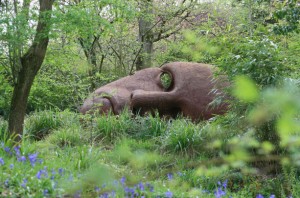
‘Broadside’ by Rick Kirby (Mild Steel) at The Hannah Peschar Sculpture Garden | Photographer Vikki Leedham
What concepts are you currently exploring and what will you embark on next?
After a two/three year drought of large commissions, I have recently won one for a series of four pieces to be placed in Mayfair, as well as another for the North Bank of the Thames, for a very large figurative piece – this I am really excited about as it is based on an idea that I’ve been developing for a little while.
Rick Kirby born 1952 in Gillingham, Kent. He graduated from 1970-73 from Newport College Of Art. B.A. (Fine Art)
All images courtesy of Rick Kirby | www.rickkirby.com
For more information on Hong Kong Art Tutoring please contact:
Gail Deayton
Telephone: +852 9722 8353
Email: gd@gaildeayton.com

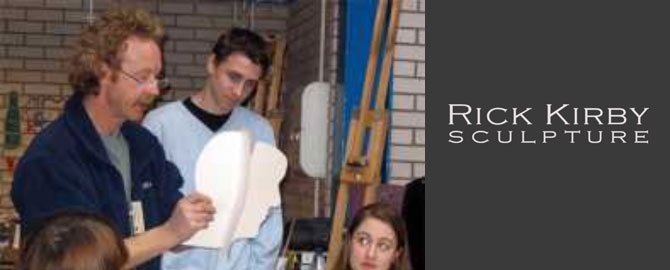

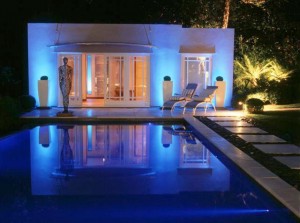
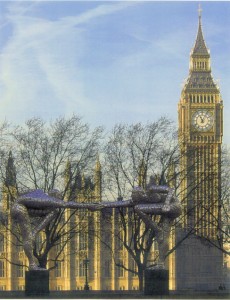
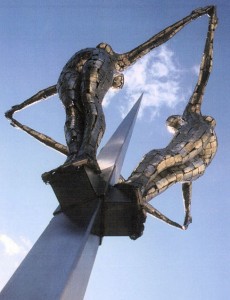
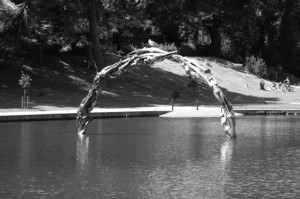
Very inspiring, Thanks Gayle.. always good to read artist interviews. I love ‘Formation’. I’m enjoying receiving these.
el